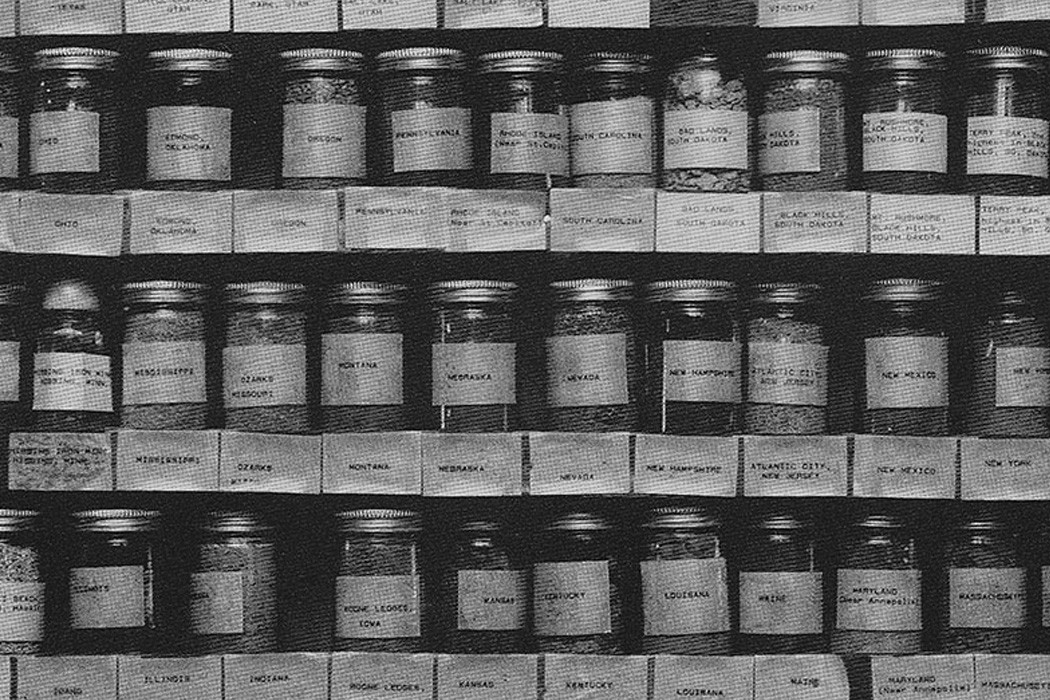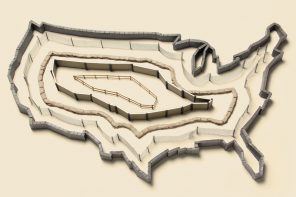Julia Shipley, a subsistence farmer in Vermont writing for Taproot Magazine, tells the story of her journey to see Uva Turnbull’s collection of soil samples from around the world. The spice-rack-type assortment of cream jars is kept in a volunteer-run museum in rural Iowa. The labels bear such locations as “Wyoming” and “Eishima Island where Ernie Pyle was killed 40 miles by plane from Okinawa.” Shipley reflects on the universal and particular nature of soil, as well as the connection between soil and the human body, invoking such inspiration as Walt Whitman’s Leaves of Grass and scientific studies of colonies of amoebas. She writes, as she studies the racks of jars and labels:
Suddenly I regret not bringing a sample from my silty land in Vermont. I could have offered some bran colored dirt to round out this united nations of terrains. But then, how would I have labeled it? … Or in lieu of teaspooned dust from my garden, what if I had brought instead the soil of a loved one, say, a cream jar marked, “Uncle Chris.”
…(N)ot only do we come from soil, and to soil we’ll return, but even in the present moment: we are the expressive form of soil.
…How do we behave if we recognize land as the source of our being: whether as teaspoons or as one planet-sized dirtball; how do we behave if we recognize we, in our human form are a phase of soil’s endless formations?




